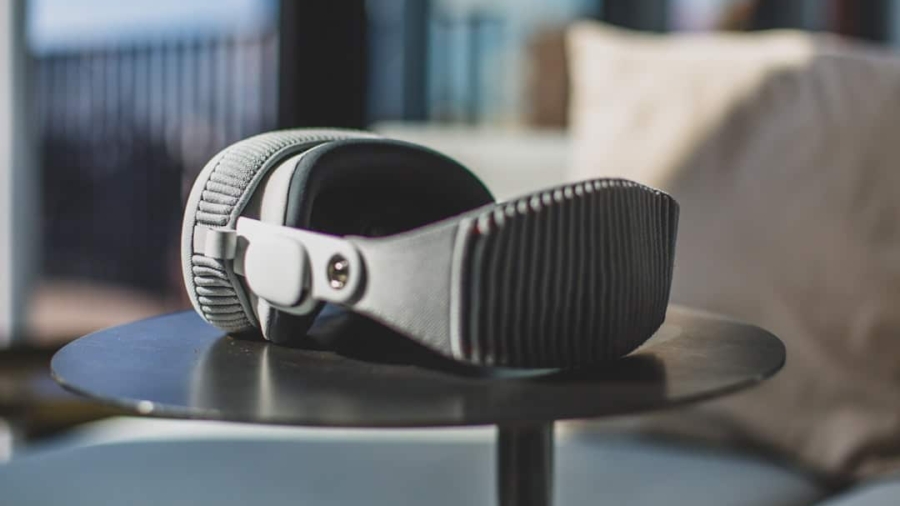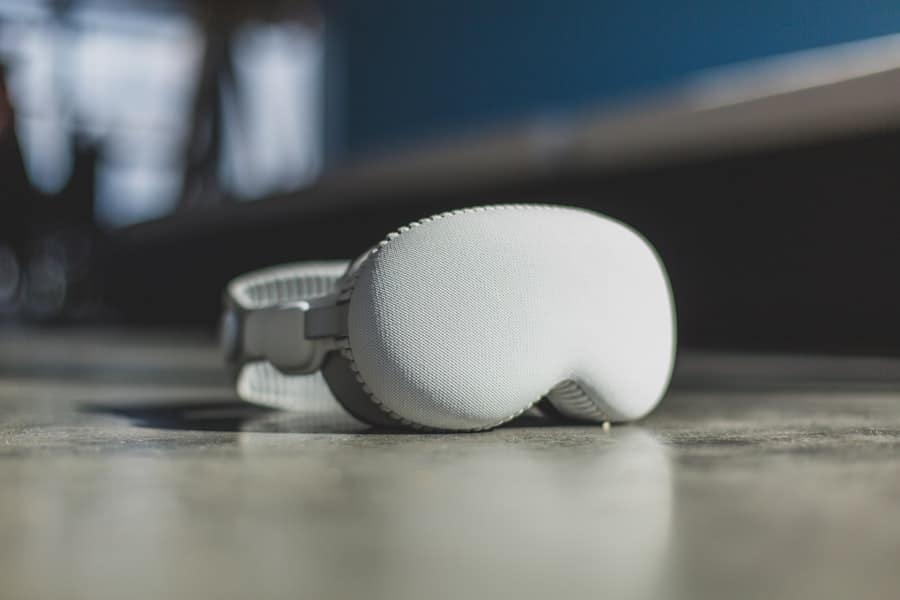Augmented Reality (AR) has emerged as a transformative technology across various industries, and its application in medical device assembly is particularly noteworthy. By overlaying digital information onto the physical world, AR enhances the way technicians interact with complex machinery and intricate components. In the realm of medical device assembly, where precision and accuracy are paramount, AR provides a unique solution that bridges the gap between theoretical knowledge and practical application.
This technology not only aids in the assembly process but also ensures compliance with stringent regulatory standards that govern the medical field. The integration of AR into medical device assembly processes is not merely a trend; it represents a significant shift in how manufacturers approach production. As the demand for innovative medical devices continues to rise, so does the complexity of their assembly.
Traditional methods often rely on printed manuals or static instructions, which can be cumbersome and prone to human error. In contrast, AR offers a dynamic and interactive experience, allowing technicians to visualize assembly steps in real-time. This capability is particularly beneficial in an industry where even minor mistakes can have serious implications for patient safety and product efficacy.
Key Takeaways
- AR technology enhances the medical device assembly process by providing real-time guidance and support to technicians.
- Technicians benefit from AR technology through improved training and onboarding, leading to increased efficiency and productivity.
- AR technology enables quality control and inspection of medical devices, ensuring high standards of production.
- Case studies and success stories demonstrate the successful implementation of AR in medical device assembly, leading to improved processes and outcomes.
- Future developments and trends in AR for medical device assembly include further enhancements in training, real-time support, and quality control.
Benefits of AR for Technicians in Medical Device Assembly
One of the most significant advantages of AR technology in medical device assembly is its ability to enhance the technician’s understanding of complex systems. By providing 3D visualizations of components and assembly processes, AR allows technicians to see how parts fit together in a way that traditional methods cannot. This immersive experience helps reduce cognitive load, enabling technicians to focus on the task at hand rather than deciphering complicated diagrams or written instructions.
For instance, when assembling a sophisticated surgical instrument, a technician can use AR glasses to view a holographic representation of the device, highlighting each component’s placement and orientation.
With step-by-step visual guidance projected directly onto their field of view, technicians can work more efficiently and with greater confidence.
This streamlined approach not only accelerates the assembly process but also minimizes the likelihood of errors. For example, a study conducted by a leading medical device manufacturer found that technicians using AR technology completed assembly tasks 30% faster than those relying on traditional methods. This increase in speed can lead to higher throughput and ultimately contribute to meeting market demands more effectively.
Training and Onboarding with AR Technology
Training new technicians in the medical device assembly sector can be a daunting task due to the complexity of the devices involved and the critical nature of their function. Traditional training methods often involve lengthy classroom sessions followed by hands-on practice, which can be time-consuming and may not adequately prepare trainees for real-world scenarios. AR technology revolutionizes this process by providing an interactive training environment that simulates actual assembly tasks.
Trainees can engage with 3D models of devices, allowing them to practice assembly techniques in a risk-free setting before working on actual products. Furthermore, AR can facilitate continuous learning and skill development for existing technicians. As medical devices evolve and new technologies emerge, ongoing training becomes essential.
With AR applications, technicians can access updated training modules that reflect the latest assembly techniques or regulatory requirements. This adaptability ensures that the workforce remains competent and compliant with industry standards. For instance, a company that implemented AR-based training reported a 40% reduction in onboarding time for new employees, demonstrating how this technology can enhance both efficiency and knowledge retention.
Real-time Guidance and Support for Complex Assembly Processes
The complexity of modern medical devices often necessitates real-time guidance during the assembly process. AR technology excels in this area by providing technicians with immediate access to critical information as they work. For example, if a technician encounters an unexpected issue while assembling a device, they can use AR to pull up troubleshooting guides or instructional videos without leaving their workstation.
This instant access to information empowers technicians to resolve problems quickly, reducing downtime and maintaining production flow. Additionally, AR can facilitate collaboration among team members, especially in environments where multiple technicians are involved in assembling a single device. By using AR headsets or tablets, technicians can share their views with colleagues or supervisors in real-time, allowing for immediate feedback and support.
This collaborative approach not only enhances problem-solving capabilities but also fosters a culture of teamwork within the assembly line. A notable example is a medical device manufacturer that integrated AR into its assembly process, resulting in a 25% decrease in assembly errors due to improved communication and real-time support.
Quality Control and Inspection with AR
Quality control is a critical aspect of medical device manufacturing, as any defects can have serious consequences for patient safety. AR technology plays a pivotal role in enhancing quality assurance processes by providing technicians with tools to conduct inspections more effectively.
This capability ensures that every aspect of the assembly meets regulatory standards before moving on to the next stage of production. Moreover, AR can assist in identifying potential defects during the assembly process itself. By utilizing image recognition algorithms integrated into AR systems, technicians can receive alerts if components are misaligned or improperly installed.
This proactive approach to quality control minimizes the risk of defects reaching the final product stage. For instance, a case study involving an orthopedic implant manufacturer demonstrated that implementing AR for quality inspections led to a 50% reduction in post-assembly defects, significantly improving overall product reliability.
Enhanced Efficiency and Productivity with AR
Optimizing Production Lines
In addition to improving individual task efficiency, AR can optimize entire production lines by providing data analytics that inform decision-making processes. For example, manufacturers can track performance metrics such as assembly times and error rates through AR systems, enabling them to identify bottlenecks or areas for improvement within their operations.
Tangible Benefits
A prominent medical device company reported that after implementing AR solutions across its production facilities, it experienced a 20% increase in overall productivity within six months, showcasing the tangible benefits of this technology.
Improved Decision-Making
By providing real-time data and insights, AR technology enables manufacturers to make informed decisions and drive continuous improvement in their assembly processes.
Case Studies and Success Stories of AR Implementation in Medical Device Assembly
Several companies have successfully implemented AR technology in their medical device assembly processes, yielding impressive results that highlight its potential benefits. One notable case is that of Medtronic, a global leader in medical technology. Medtronic adopted AR solutions to enhance its training programs for new employees involved in assembling complex cardiac devices.
By utilizing AR headsets that provided step-by-step visual instructions, the company reported a significant reduction in training time and an increase in first-pass yield rates during production. Another compelling example comes from Siemens Healthineers, which integrated AR into its manufacturing processes for diagnostic imaging equipment. The company developed an AR application that allowed technicians to visualize internal components during assembly, ensuring precise alignment and installation.
As a result of this implementation, Siemens Healthineers achieved a 30% reduction in assembly errors and improved overall product quality, reinforcing the value of AR technology in high-stakes environments.
Future Developments and Trends in AR for Medical Device Assembly
As technology continues to evolve, the future of AR in medical device assembly looks promising. One emerging trend is the integration of artificial intelligence (AI) with AR systems to create even more sophisticated support tools for technicians. AI algorithms can analyze data from previous assemblies to provide predictive insights and recommendations tailored to specific tasks or devices.
This synergy between AI and AR has the potential to further enhance efficiency and accuracy within assembly processes. Additionally, advancements in hardware technology are likely to make AR solutions more accessible and user-friendly for technicians. As headsets become lighter and more comfortable while offering higher resolution displays, adoption rates are expected to increase across the industry.
Furthermore, cloud-based AR solutions will enable seamless updates and collaboration among teams dispersed across different locations, fostering innovation and knowledge sharing. In conclusion, as augmented reality continues to mature within the medical device assembly sector, its potential applications will expand further, driving improvements in training, efficiency, quality control, and overall productivity. The ongoing investment in this technology reflects a commitment to enhancing manufacturing processes while ensuring patient safety remains at the forefront of medical device development.
There is a fascinating article on the difference between a graphic tablet and a drawing tablet that explores the nuances of these two devices. Understanding the distinctions between these tools can be crucial for artists and designers looking to enhance their creative process. Just like how AR is revolutionizing medical device assembly, having the right tools and technology can greatly impact the efficiency and quality of work in various industries.
FAQs
What is AR?
AR stands for Augmented Reality, which is a technology that superimposes computer-generated images and information onto a user’s view of the real world, providing a composite view.
How is AR assisting technicians in medical device assembly?
AR is assisting technicians in medical device assembly by providing them with real-time visual guidance and instructions overlaid onto the physical work environment. This helps technicians to accurately assemble complex medical devices and reduces the risk of errors.
What are the benefits of using AR in medical device assembly?
Some benefits of using AR in medical device assembly include improved accuracy, reduced assembly time, enhanced training for technicians, and the ability to access real-time data and instructions without having to refer to paper manuals or computer screens.
Are there any challenges in implementing AR for medical device assembly?
Some challenges in implementing AR for medical device assembly include the initial cost of the technology, the need for specialized training for technicians, and ensuring compatibility with existing assembly processes and equipment.
Is AR widely used in the medical device industry for assembly purposes?
While the use of AR in medical device assembly is growing, it is not yet widely adopted across the industry. However, many companies are exploring and implementing AR technology to improve assembly processes and efficiency.



